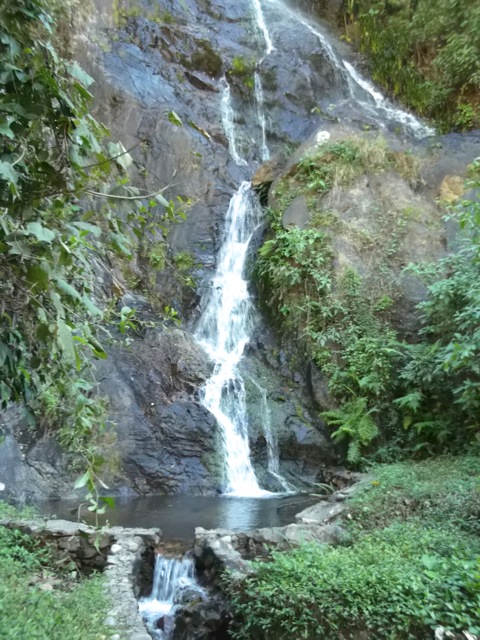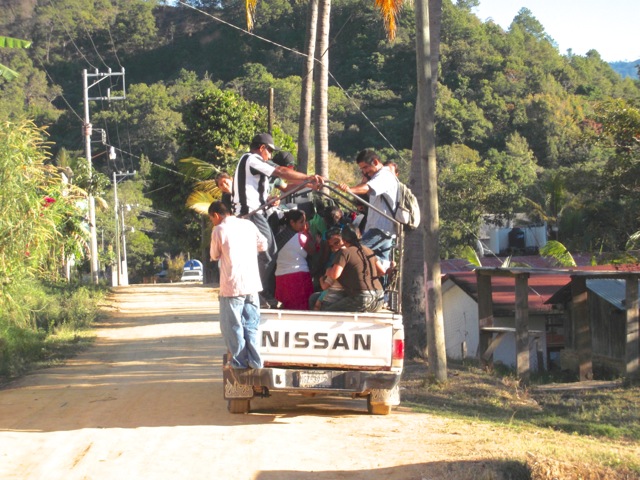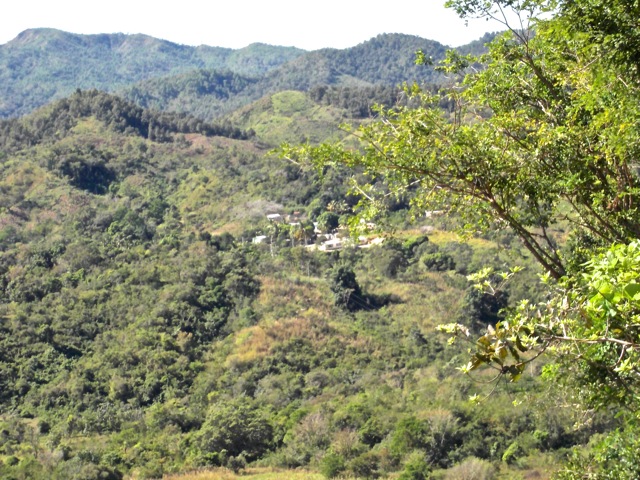San Antonio Lalana: a mountain valley and a highway
Sometimes location is everything. One day the desert under your feet produces most of the world’s oil and the world comes to your feet, or your community, buried deep in the Southern Sierra Madre of Oaxaca is smack dab in the middle of a new highway connecting Puerto Escondido to Oaxaca and ICA and various federal and state authorities come knocking at your door. Not only will they pay good money for the land they need to build the roadway, but they will also pay for infrastructure improvements to make up for damage to the environment. Even better, the new highway will have an access ramp just outside your town of 800 residents, and the four hour drive to Puerto (mostly over dirt roads that are only passable by 4x4’s during the rainy season) will be shortened to 30 minutes.
So why did the authorities of the San Antonio Lalana (also spelled La Lana), an agencia municipal of the Municipio of San Pablo Coatlán, block access to the highway construction site for three days in November? ¡Viva Puerto! spent two days in Lalana interviewing local officials and town’s people to find out.
The pavement ends shortly after the town of Santa María Colotepec as you head north to Paso Ancho and the bridge over the Colotepec River which is the border with the Municipio of San Baltazar Loxicha. Passing through Santa Martha Loxicha, we arrived at the county seat of San Baltazar two hours and forty minutes after leaving Puerto.
At 1,100 meters in an extremely rugged stretch of the Southern Sierra Madre, the morning sky in San Baltazar was a brilliant blue never seen on the coast. As we left the town we took an unmarked dirt road that led us due west and 400 meters below to the valley of Lalana. Not far as the crow flies, but 90 minutes through pine forests, coffee plantations and breathtaking vistas.
Before the highway was even conceived, Lalana had been fighting with its neighbors. Lalana claims a patch of mountain on the east side of the river that separates it from San Baltazar because of an old rental agreement. It also claims ownership of the 11,000 hectares that include the communities of San Isidro Comital and Los Tamarindos and the stretch of the new highway from the border of Colotepec.
What is not in dispute is that Lalana, Comital and Los Tamarindos are located in the Municipio of San Pablo Coatlán. All Mexican states are divided into municipios — Oaxaca has 570, Baja California only five. The Municipio is responsible for the administration of public services and receives money from both the federal and state governments. What is disputed is whether the land in these communities belongs to the Bienes Comunales of San Sebastián or is under the jurisdiction of the Representation of the Lands Belonging to the People of San Antonio Lalana.
Most of the land in Oaxaca is held communally by its 1,602 legally constituted Bienes Comunales. It is not uncommon for a particular Bienes Comunales to include land in two municipios, just as one might own land in the U.S. that straddles various counties and water districts. Lalana claims that its land was privatized in 1935 and that there are federally registered public titles for each parcel. These titles were not recognized by the Bienes Comunales of San Sebastián.
This conflict has nothing to do with the rights of a particular person to his or her land. According to state officials, there is no benefit or loss to either community if the land belongs to Lalana or to San Sebastián. Yet ownership of land is everything in the mountains of Oaxaca where communities have taken up arms over a few hundred hectares of forest.
On March 24, 2013 representatives of 13 federal and state agencies as well as ICA came to San Antonio Lalana to sign an agreement with the local authorities. The agreement stipulated among other things that the federal and state governments would prioritize settling the land dispute with San Sebastián. But the most important clause was the one stating that, if the electrification of Lalana did not begin within three months, the local authorities had the right to suspend construction of the highway.
In fact, most of the region has electricity, but it is single phase rather than three-phase. (The difference is three power-lines coming off the grid versus only one line.) Both San Sebastián and San Baltazar have the three-phase system. The problem is that neither of Lalana’s neighbors will allow the electric company (CFE) to make the connections, even though the Federal government has authorized the payment to CFE.
On the trip back to Puerto we drove south, parallel to the highway, to visit the smaller valley communities of San Isidro Comitlán and Los Tamarindos. There we enjoyed some home brewed tepache made from fermented sugar cane. This helped put us in the mood for a very twisty drive through the mountains that took us through the San Sebastián community of San José Cieneguilla and then to La Reforma in San Pedro Mixtepec.
Thanks to ICA, which uses both approaches to bring workers and machinery for the construction of the tunnels, the dirt tracts were all in excellent condition. ICA is building offices in Lalana as well as an area for assembling and maintaining the construction machinery. They have already built housing for some of their workers, and they are now building a computer center near the town hall for the purpose of training the local population for future employment on the project.
The state and federal governments have also done their part for Lalana by agreeing to improve the local roads and providing other benefits to the community, besides paying for the connection to the three-phase grid.
The November action was an unsuccessful attempt to get the state government to intercede on its behalf with San Baltazar so that the CFE could connect the region to the grid.



















